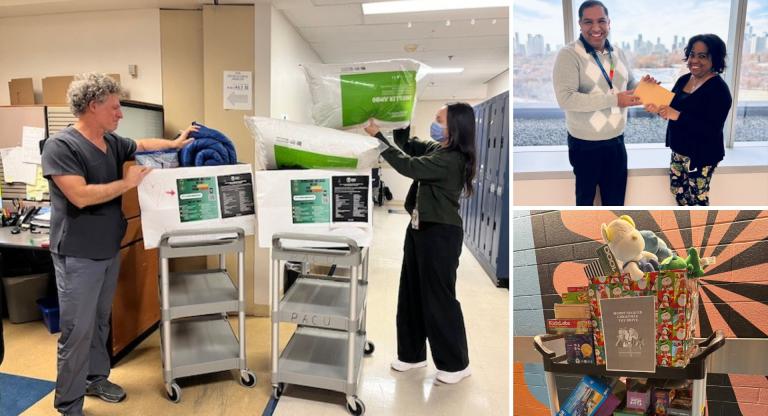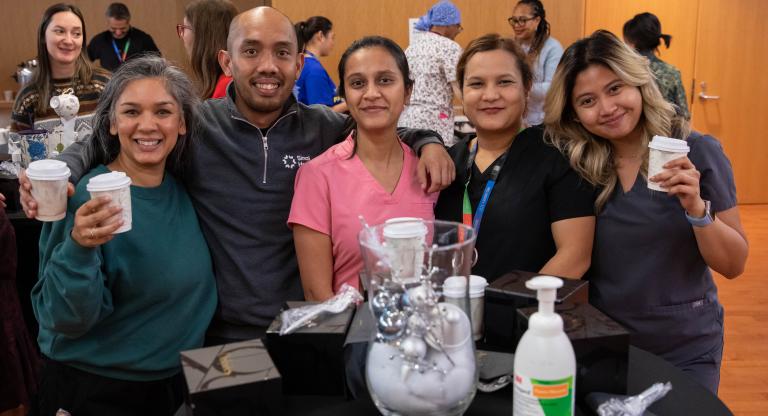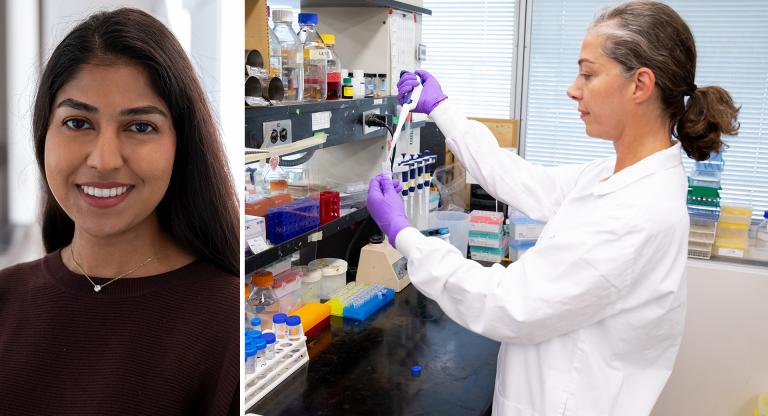How MAUVE volunteers create a better hospital experience

Hospital visits can be an intimidating and lonely experience for older adults.
Since its creation in 2010, the Maximizing Ageing Using Volunteer Engagement (MAUVE) program at Sinai Health has been assisting older patients during their hospital stays.
We spoke to Angel Lau, Elder Life Specialist, Lahina Sivanantharajah, MAUVE Coordinator at Mount Sinai Hospital, and Alexa Hernandez, MAUVE Coordinator at Hennick Bridgepoint Hospital, to learn more about how the program has evolved.
How do MAUVE volunteers get involved in helping older patients during their hospital stays?
MAUVE volunteers provide supplemental support to our patients’ care teams by engaging with older adults in non-clinical ways.
Patients are referred to MAUVE and we work with their care teams to identify what type of support is best for the patient. We help with things like meal-time and technology support, keeping patient’s company, reality orientation and facilitating specialty programs and leisurely activities, like painting and games.
We provide one-to-one bedside visits that get built into a patient’s daily routine, as well as short “friendly visits” for patients who may need company or assistance during their briefer hospital visits.
What role can the MAUVE program play in a patient’s recovery?
Spending long periods of time in the hospital can be difficult in many different ways, and visits from MAUVE volunteers help the day go by faster. They offer their time, care and patience. Our visits help regulate patient’s sleep cycles by providing daytime stimulation so they don’t sleep through the whole day.
The volunteers also give patient’s caregivers a chance to take a break. It can be difficult to leave the hospital room, and our visits give caregivers a chance to eat, go to the bathroom, get some coffee, etc. Sometimes taking care of patients happens by making sure their caregivers and loved ones have a chance to take care of themselves.
We last featured MAUVE in 2020. Have there been any major changes to the program since then?
In 2021, under Angel’s guidance, we began to incorporate the patient-centered one to one visiting model to address individual patient needs directly. Each patient got to do something they expressed interest in.
We saw that this approach was more effective and fulfilling for both patients and volunteers. It made it easier to create a connection, especially with patients who have cognitive impairments, like dementia and delirium.
The way we train our volunteers has also evolved. We want our volunteers to feel confident in this front-line position so we offer resources and daily in-person support. We do this with in-class training, orientations of various units in the hospital, monthly meetings, case studies training, and access to the Gentle Persuasive Approaches (GPA) in Dementia Care training.
Do you have any future plans for the program or are there any new features you are ready to roll out?
At Mount Sinai, we are proud to now have our volunteers in every in-patient unit serving older adults and are hoping to expand into the new 12 North unit soon. We also have been working with the Infection Prevention and Control team to provide the appropriate training to our volunteers so they are able to safely visit patients who are under contact precautions.
Our MAUVE volunteers at Hennick Bridgepoint are currently visiting patients on the Medical Rehab and Transitional Care units, with plans to expand our program to many other units within the hospital.











